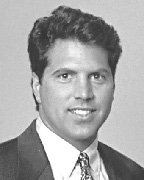In the late 1990s, golf companies and local developers were buying land to build courses and aggressively bidding up prices for existing golf facilities because funding was in great supply, and the outlook for golf was very good. Tiger Woods brought excitement and attention to the game of golf, which translated into a boom for the golf business. Tiger turned pro in 1996 at the age of 20; he signed an endorsement deal with Nike for $40 million. In 1997 he led the money list and won the Masters, his first Major. By 1998 he was already the world's number one golfer. In 1999 he topped the money list, won his second Major and recorded eight PGA wins. In 2000 he won the US Open at Pebble Beach and completed the "Tiger Slam".
While Tiger was the talk of the town, and golf dominated water cooler conversations, the US unemployment declined from around 5.5% in 1995 to 3.8% in April 2000. This five year period of prosperity helped fuel the boom in the golf industry.
That all changed in 2001 as the effects of over-building, and a national recession weakened the growth needed to support the new supply of inventory. Between 1990 and 1995, the US saw the emergence of 1,250 new golf courses. That number grew to around 1,750 from 1995 through 2000 at which time the number of new courses built topped out at 400. As the effects of the national economic downturn worsened, the decline in golf participation became evident. It was first seen as fewer rounds were played and membership rosters dwindled at private clubs. Unemployment rose quickly following 9/11, but again the national economy rebounded between 2003 through 2007 as unemployment rates declined from around 6.3% in June 2003 to 4.4% in May 2007. While buyers were more cautious about golf, there were funding sources and competition existed among buyers. Several private equity firms had entered the arena and the future outlook appeared good again. But that all changed in 2008 when the sub-prime market collapsed and as a result several Wall Street firms failed, including the iconic Lehman Brothers. The ensuing credit crisis made it impossible to fund real estate, and golf in particular. Long-term national golf lenders Textron Financial, Capmark, Pacific Mutual and GE Capital have left the market altogether. Capmark and Textron, the two largest national golf course lenders, are actually in the process of selling off their golf loans in bulk at significant discounts.
As unemployment rose precipitously, reaching 10% in October of 2009, golf felt the harsh effects. The results of overbuilding hit as golf participation began to drop at an accelerated pace. Despite a 9.4% increase in the U.S. population between 2000 and 2010, total rounds played dropped 8.4%, or from 518.4 mil to 475.0 million. This coupled with less capital has created a perfect storm. To make matters worse, Tiger was no longer "winning".
The current economic downturn appears to have hit private courses harder than public ones. Country club memberships are easy to give up in tough economic times. And, while families are working more and playing less, it become harder to justify the cost. Public courses have had to discount more to maintain rounds, and play is more dependent on weather. But private clubs have seen a significant decline as membership fees have been slashed as a way of attracting new members, or at least replacing the ones that leave every year. The Bay Club in Mattapoisett, Mass. began accepting golf member deposits $45,000 in 2001, and the deposits peaked at $120,000 in 2007. The deposit was reduced to $75,000 in 2008-2009 and more recently (2010) to $30,000 and payable over time. Despite these attempts to grow the membership, they have remained flat and well below their goal and cap. Clubs like Willowbend on Cape Cod had charged as much as $150,000 in the late 1990's and $100,000 in 2004, while today they are priced in the $40k range.
And at Indian Pond in Kingston, membership sales commenced in June of 1999 at an initial offering price of $12,500, while prices peaked at $50,000 (80% refundable), before dropping to $35,000, and again to $25,000 by 2008 (70% refundable) or $17,500 (non-refundable). Today, the initiation fee is priced at $12,500 (non-refundable), and can be deferred.
It It is important to note that cap rates for golf are dependent on a number of factors, a partial list of which can be found below:
* Profit margins
* Capital expenditures, recent or planned
* Barrier to entry (high or low)
* Market trends
* Buyer profile
The upward trend in cap rates supports the notion that values have been declining. Recovery will occur as more jobs are added, unemployment rates drop and homes values increase, then people will start playing more golf, and demand for private clubs and public tee times will increase. Hopefully by then, lending will loosen up even more. But in the interim, values will likely remain flat. We are starting to see small signs of recovery, as home prices in certain markets are up, and unemployment is declining, albeit at a slow pace.
Jeffrey Dugas, MAI, SGA
Wellspeak Dugas & Kane, Cheshire, Conn.
Tags:
People will start playing more golf and demand for tee times will increase as economy recovers
May 22, 2012 - Spotlights









.png)